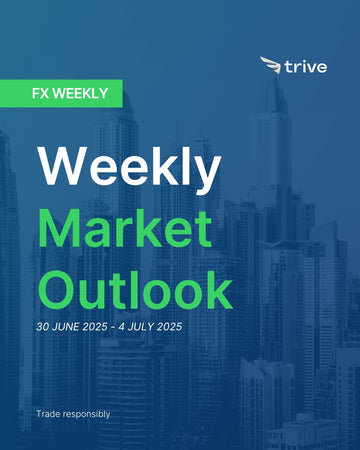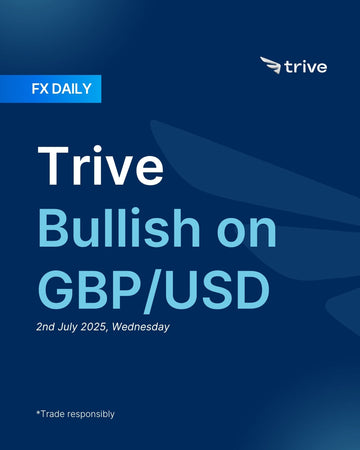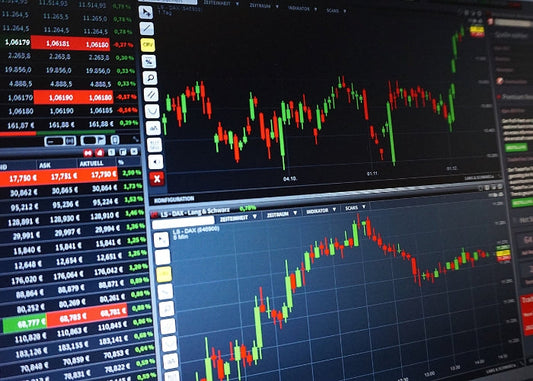FX Daily: Trive Bullish on EUR/USD

The euro remains an attractive currency in the current environment of uncertainty, supported by its status as the second most liquid reserve currency and the nearing end of the ECB’s easing cycle. In contrast, concerns over stagflation, questions around the Fed’s independence, and potential policy shifts under Trump are making the US dollar increasingly less appealing.
EUR: Liquid currency and policy divergence
The Euro jumped to its highest level in over three years, lifted by a sharp drop in the US Dollar and a clear improvement in regional risks. The week started off weak for the Euro, with EUR/USD dipping toward its 21-day moving average near 1.1450 due to concerns about an energy price shock caused by the US-Iran conflict. But as tensions in the Middle East quickly eased, that concern faded, and the market turned in favor of the Euro.
The rally gained more strength as traders increasingly sold the dollar, driven by worries about the Fed’s independence and a more positive outlook on EU-US trade. This combination pushed EUR/USD through several resistance levels, reaching a multi-year high of 1.1754 and ending the week with strong momentum.
One of the main drivers was a shift in the trade outlook between the EU and the US. A report from the Wall Street Journal suggested that the EU was considering lowering tariffs on US goods to help secure a deal with President Trump. European Commission President von der Leyen later confirmed they had received the latest US trade proposal. Even though she said the EU was still prepared for a no-deal outcome, positive comments from US Commerce Secretary Lutnick helped boost the Euro further.
The quick de-escalation of the US-Iran conflict also helped the Euro. Initial worries about a potential closure of the Strait of Hormuz, which would hit the Eurozone hard due to its dependence on imported energy, quickly faded, removing a major drag on the currency. At the NATO Summit, President Trump reaffirmed support for Article 5, but also threatened Spain with higher tariffs over defense spending. French President Macron pushed back, saying the US couldn’t demand more defense spending while continuing a trade war.
From a central bank perspective, the European Central Bank remained calm. ECB officials, including President Lagarde, emphasized that the recent spike in oil prices hadn’t changed the broader trend of slowing inflation. This signaled a steady and predictable policy path, in contrast to the uncertain direction of the Fed. Expectations for ECB rate cuts remained steady, with markets still pricing in about 24 basis points of cuts by year-end. Policymakers like Knot even acknowledged a cut this year was possible, reinforcing a data-driven approach.
Inflation data from France and Spain came in slightly higher than expected, but didn’t change the overall market mood. German Bunds saw a brief sell-off in response, but the Euro remained strong. Survey data was mixed. Flash PMIs early in the week had little effect, while the German IFO Business Climate survey beat expectations on Tuesday and gave the Euro a slight boost. Still, the main drivers were global rather than local.
The Euro became the main way for traders to express their bearish outlook on the US Dollar. The rally had less to do with confidence in the Eurozone itself and more with the Fed-related sell-off in the dollar. A break above the key 1.1630–1.1640 resistance zone was also important from a technical point of view, opening the way for some analysts to start talking about a possible move toward 1.20.
We are bullish on the Euro because tensions are easing on multiple fronts. The US Dollar is under pressure as concerns grow about the Fed’s independence, and that’s making investors look for alternatives. At the same time, EU-US trade talks are showing signs of progress, with both sides softening their stance, which improves the Euro’s outlook. The risk of an energy shock from the US-Iran conflict faded quickly, removing a major headwind for the Eurozone. The ECB has stayed calm and consistent, offering a more stable policy path compared to the uncertainty surrounding the Fed. With EUR/USD breaking above key resistance, we see room for the rally to continue.
USD: Throw it away
The US Dollar dropped to multi-year lows during a week marked by a sharp shift in geopolitical tensions and rising concerns about the Federal Reserve’s independence. The DXY started the week with a sudden but brief jump to 99.42, driven by safe-haven flows after a surprise US military strike on Iranian nuclear facilities. However, the dollar’s strength quickly faded when Iran’s response was seen as mostly symbolic and a ceasefire was soon announced. This rapid de-escalation sent the dollar into decline.
Attention then turned to tensions within the Fed itself. Some policymakers supported a July rate cut, but most officials pushed back, preferring a more cautious, wait-and-see approach. The most significant moment came late Thursday, when the Wall Street Journal reported that President Trump was considering announcing a successor to Fed Chair Powell ahead of the 2026 term end. This move was widely viewed as a threat to the central bank’s independence, sending the dollar to a multi-year low of 96.99. The week ended with the dollar still under pressure, as a slightly higher-than-expected PCE inflation reading failed to offset the broader uncertainty and cooling trade tensions.
The May Core PCE Price Index, the Fed’s preferred inflation measure, came in slightly hotter than expected at 0.2% month-on-month and 2.7% year-on-year. Still, the reaction was limited by weaker figures elsewhere, including an unexpected drop in personal spending and income. A flood of data on Thursday added to the uncertainty. The final Q1 GDP was revised down to -0.5%, but the Core PCE deflator was revised up to 3.5%, raising concerns about stagflation. Jobless claims offered mixed signals, and a spike in durable goods orders was driven entirely by a large and volatile aircraft order. Consumer confidence fell unexpectedly, and both new home sales and exports dropped in May, widening the trade deficit.
The sharpest drop in the dollar followed the WSJ report about Trump possibly announcing a new Fed Chair before Powell’s term ends. Governor Waller, who is seen as dovish, was mentioned as a possible choice. Markets interpreted this as an attempt to steer the Fed in a more politically favorable, dovish direction. Within the Fed, a divide became clearer. While some like Governor Bowman and Waller supported a near-term rate cut, others including Powell, Williams, Bostic, Kashkari, and Barr favored holding off until the effects of tariffs become clearer. Despite the resistance, markets began to price in a 25 basis point rate cut by the September FOMC meeting, moving expectations forward from October.
On the geopolitical front, the week began with the US launching “Operation Midnight Hammer” against Iranian nuclear sites, which pushed oil prices and demand for the dollar higher. But within a day, the situation reversed after Iran’s limited response and a ceasefire announcement by Trump. This quick de-escalation turned into a drag on the dollar. The trade narrative also eased. The White House announced a framework deal with China, clarifying existing agreements. Reports also suggested the EU might lower tariffs on US imports to secure a deal. Officials began to downplay the importance of the July 9th tariff deadline, with some hinting that agreements could be reached by Labor Day. Meanwhile, Trump paused trade talks with Canada and threatened new tariffs over its digital services tax.
Market sentiment shifted dramatically. It started with a risk-off move supporting the dollar, but as geopolitical fears faded, the market turned toward selling the dollar. From mid-week on, the main driver of this shift was fear of US policy instability, especially concerns about the Fed’s independence following the WSJ report.
We saw a clear shift toward a bearish outlook on the dollar this week, and it mainly came down to two things: the rapid easing in geopolitical tensions and growing concerns over the Fed’s independence. The initial safe-haven boost from the US-Iran conflict faded quickly after Iran’s response was mostly symbolic and a ceasefire was announced. That de-escalation pulled risk appetite back in, weakening the dollar.
At the same time, concerns about the Fed’s independence surged after reports that Trump might replace Chair Powell early, which shook market confidence and pushed the dollar to multi-year lows. Even though Core PCE came in slightly hot, weak spending, lower income, and a GDP downgrade raised stagflation fears and limited any bullish reaction.
For these reasons, our baseline bias is bearish. However, with the PMI’s and Job Report coming up, we’ll be ready to adapt. Very strong PMI’s and a strong NFP could shift the near term bias to bullish.

Disclaimer
This material is provided for informational purposes only and does not constitute financial, investment, or other advice. The opinions expressed in this material are those of the author and do not necessarily reflect the views of Trive International. No opinion contained in this material constitutes a recommendation by Trive International or its author regarding any particular investment, transaction, or investment strategy. This material should not be relied upon in making any investment decision.
The information provided does not consider the individual investment objectives, financial situation, or needs of any specific investor. Investors should seek independent financial advice tailored to their individual circumstances before making any investment decisions. Trive International shall not be liable for any loss, damage, or injury arising directly or indirectly from the use of this information or from any action or decision taken as a result of using this material.
Trive International may or may not have a financial interest in the companies or securities mentioned. The value of investments may fluctuate, and investors may not get back the amount they originally invested. Past performance is not indicative of future results.
For more information about Trive International, please visit http://trive.com/int
Additional Information
Investing involves risk, including the potential loss of principal. Diversification and asset allocation strategies do not ensure a profit or guarantee against loss. The content in this material is subject to change without notice and may become outdated or inaccurate over time. Trive International does not undertake any obligation to update the information in this material.
By accessing this material, you acknowledge and agree to the terms of this disclaimer. If you do not agree with these terms, please refrain from using this information.
कोई टिप्पणी नहीं
Home
Trive
TriveHub





0 टिप्पणियाँ